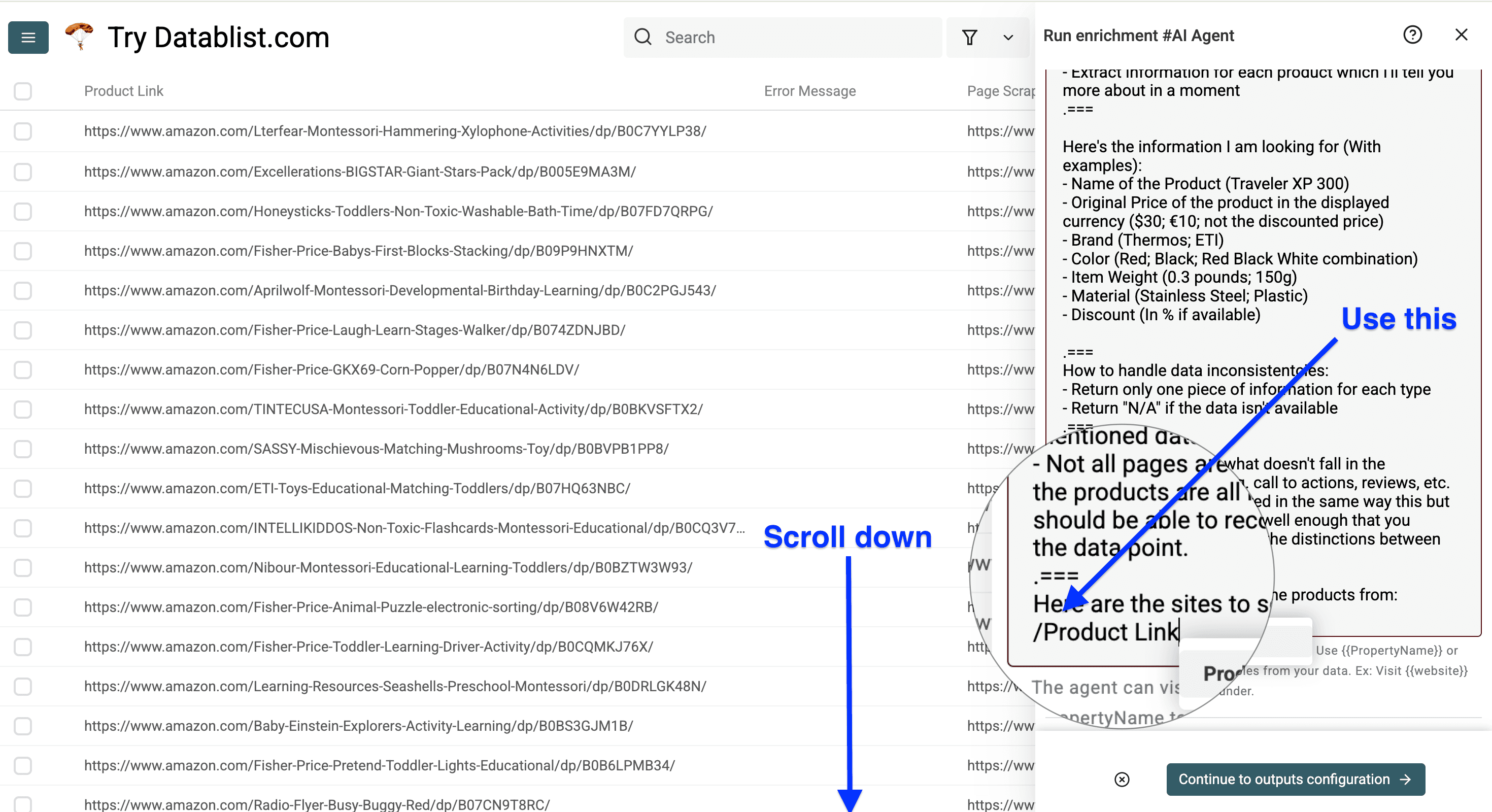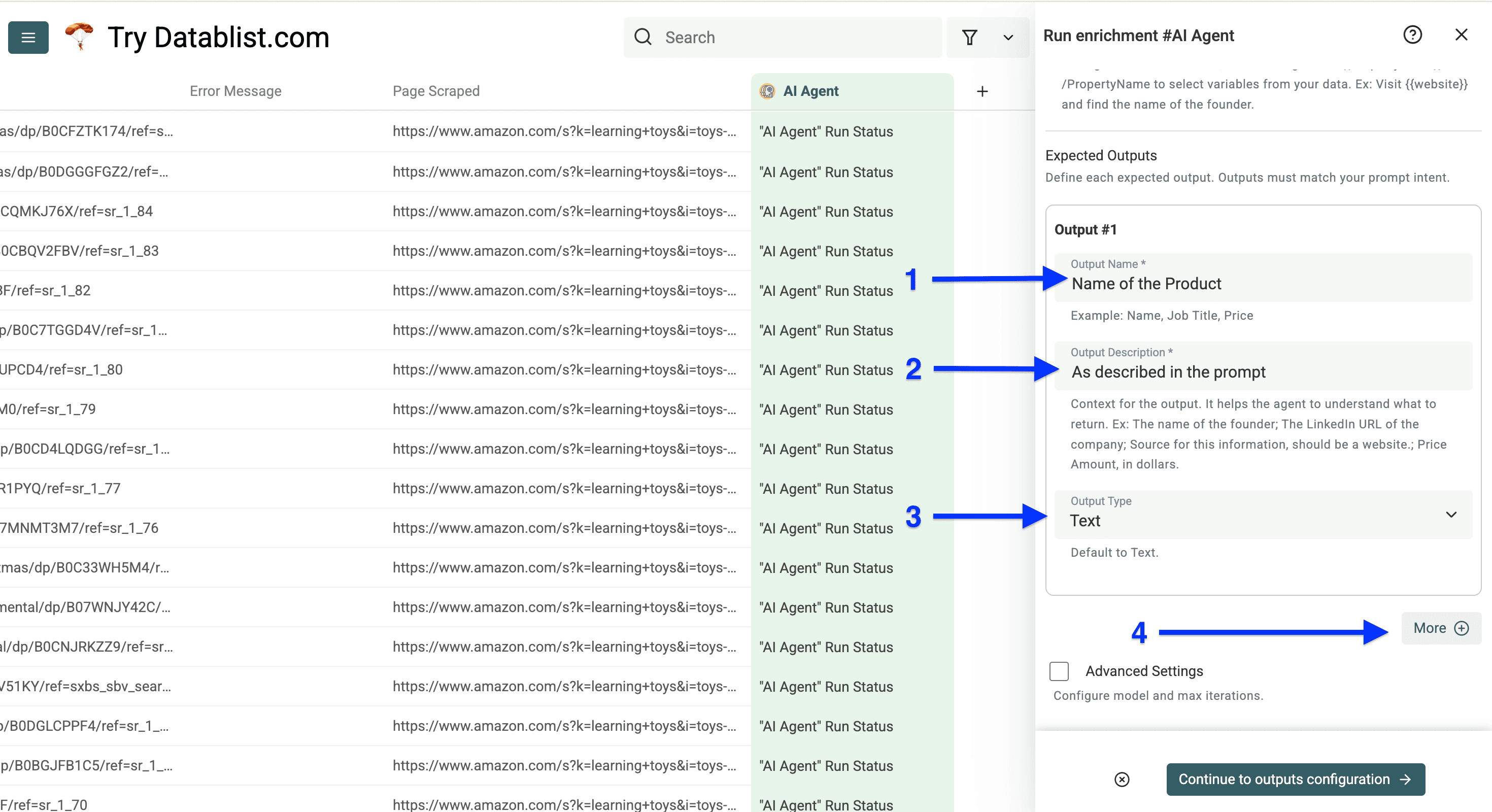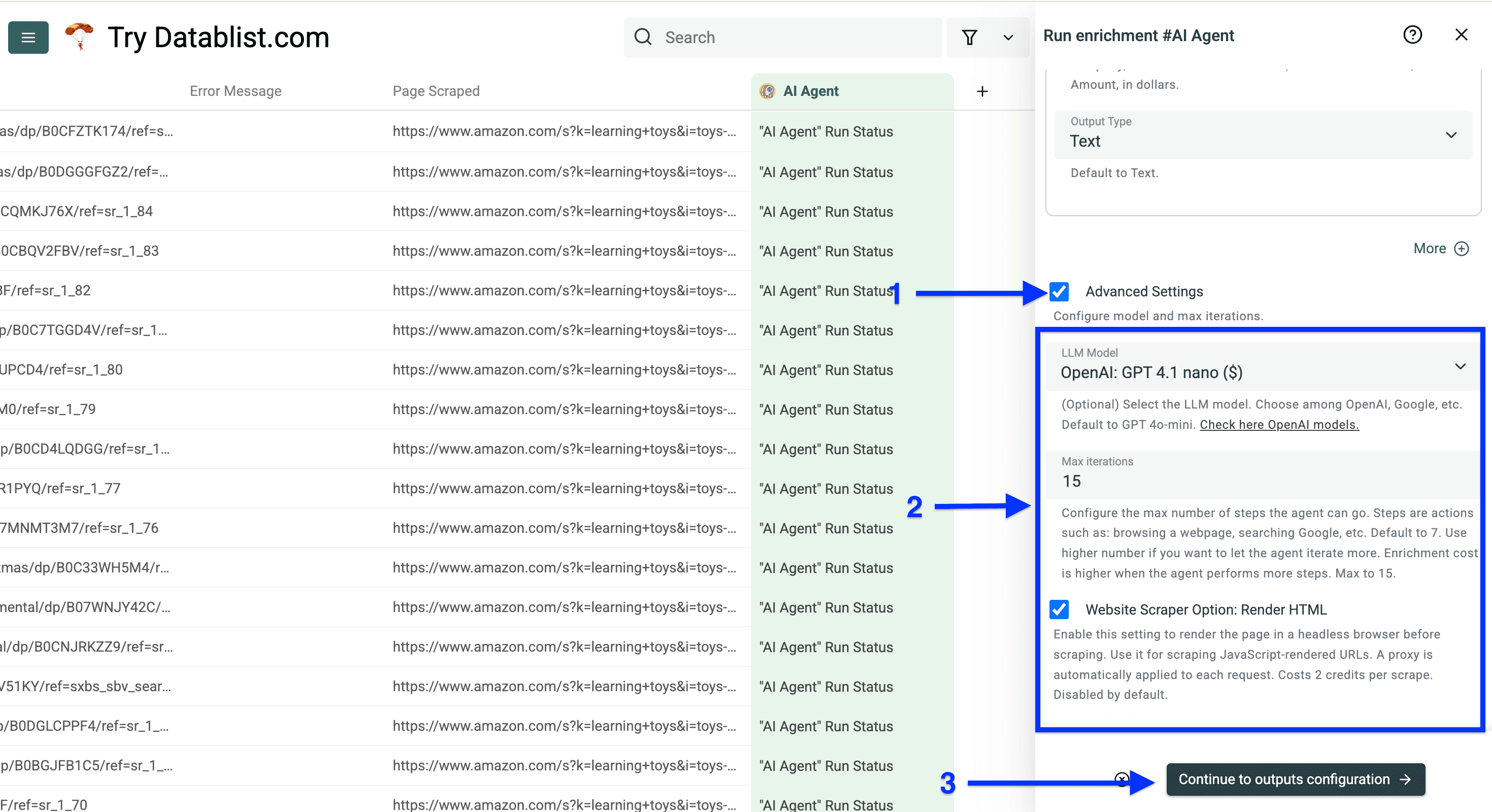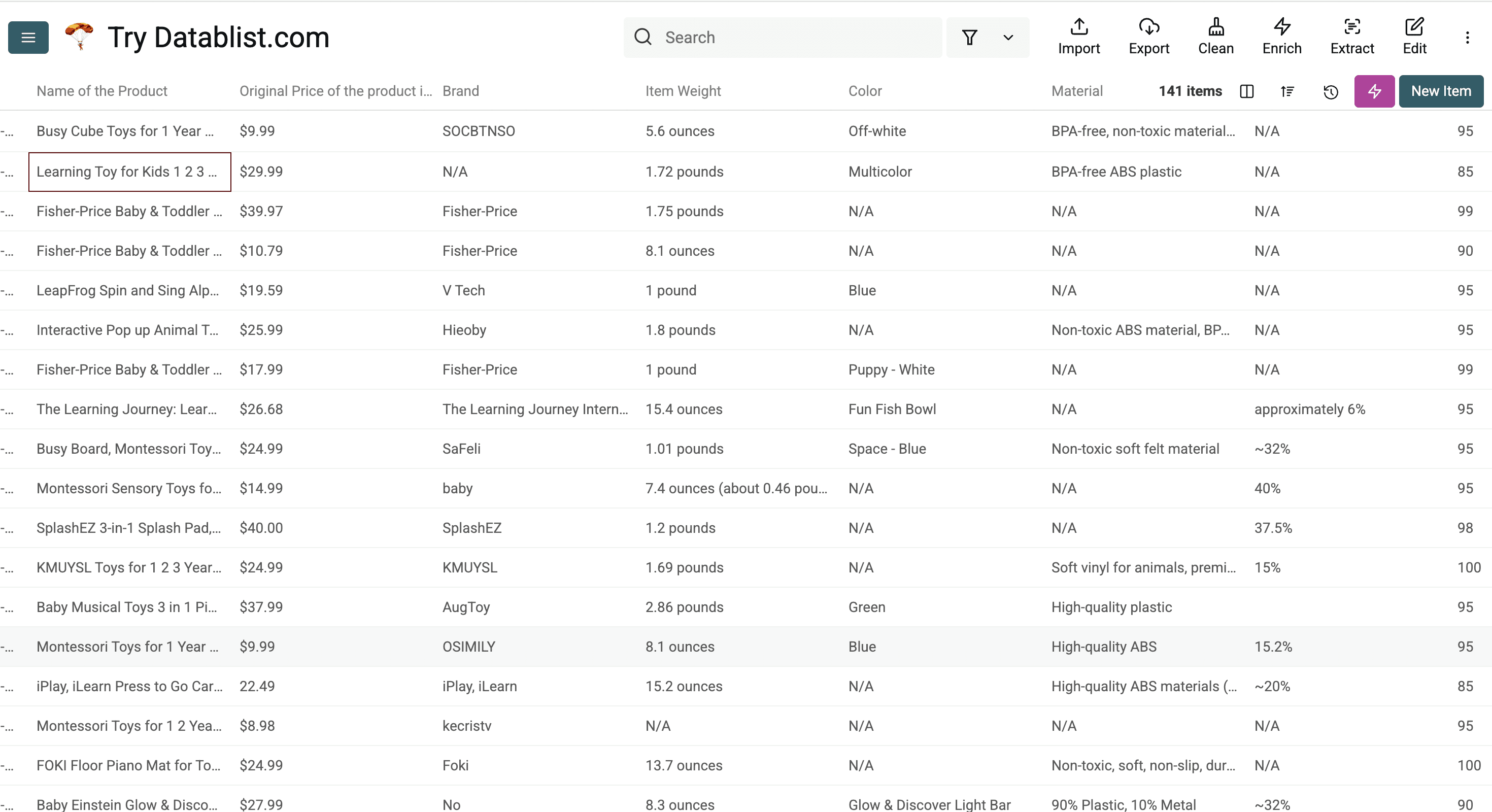The problem with most Amazon data scrapers is that you have to provide the ASIN numbers or links to each product to scrape the product information — but what if you want to scrape thousands of products from Amazon? This is where it gets annoying.
Another problem with those scrapers is that they all say they are "no code" but require you to set up APIs, understand HTML tags, etc., but this isn't what you're looking for when you want to scrape hundreds or even thousands of Amazon products.
This guide will show you how to actually scrape product lists from Amazon using an AI Agent that can even scrape multiple Amazon pages.
Here’s what this guide includes:
- How to setup the Amazon search scraper
- Scraping product links from Amazon search results
- Extracting details from an Amazon products page
Step 1: Pre-Setup for Amazon Product Extraction
When scraping search results from Amazon, you need a tool that can actually navigate the different pages and get you the product links, some people call it Amazon product link extractor we call it AI Research Agent.
To start extracting product links go to Datablist.com and sign up.
Then, create a collection by clicking on New Collection from the starting page, or on the Create new collection link in the sidebar.
That's what you should see once you've created a Datablist collection (give it a name).
💡 What is Datablist?
Datablist is an AI-powered spreadsheet and data management platform that helps you collect, clean, organize, enrich, and automate data workflows—all without technical skills.
Imagine Excel, but enhanced with built-in data sources, enrichments, and AI agents that let you scale and streamline tasks far beyond what traditional spreadsheets offer.
Go to Amazon and copy the URL of your search results.
For my example, the URL is https://www.amazon.com/s?k=coffee+mug&crid=1UV1WPG69YYZM&sprefix=coffee+mug%2Caps%2C197&ref=nb_sb_noss_1
It usually starts with https://www.amazon.com/s?k=XXX.
Now you should have:
- Signed up for Datablist.
- Created a collection.
- Copied Amazon URL to your clipboard.
That’s it with the pre-setup 🙂
Now I’ll show you how to set up your automation to extract the product links from the Amazon search results.
Step 2: Scraping Amazon Search Results
Think of Datablist's AI Research Agent as an employee on a construction site — it can transfer only a limited amount of data at a time. This is why we'll first scrape all product links from the Amazon search results and then extract the product details afterward.
Now, go back to your Datablist collection and click on See all sources.
Click on AI Agent - Site Scraper.
Paste the Amazon search link in Url to scrape.
Now, copy the prompt below and paste it in the Prompt field. Don’t forget to edit it.
I want you to extract all links to products on this page
===Extract only the products from page {{X}} - current page - and beyond. The page is specified in the URL with the "page=X" parameter.
===Extract as many links as possible but only the product links and nothing else.
===
No Introductions
No Explanations
No Thoughts
Here’s how to edit the prompt (example below):
Replace {{X}} with the page you’re starting from and that’s all.
Now, click on Enable Pagination and set Max Pages to 10.
📘 Why Only 10 Pages?
Because we define the starting URL in the setting, we start with only the first 10 pages. If the results are good, we will start the AI Scraper again starting from page X + 10. See our Resume Amazon Scraping from Another Page section.
Next, we will configure the outputs.
To do this, scroll down and:
- Paste
Product Linkinto Output Name. - Paste
Link to the productinto Output Description. - Select
URLas Output Type.
Then, click on More.
For the second output:
- Paste
Error Messageinto Output Name. - Paste
The reason why you couldn't deliver the output (only by failure)into Output Description.
Then check the box next to Advanced Settings.
- Choose OpenAI: GPT 4.1 mini.
- Set Max iterations to 10.
- The Website Scraper Option: Render HTML setting is for websites that use JavaScript to render the page. Here the setting is optional.
Click on Continue.
Click on the ⊕ icons to add a new column for each output.
Click on Run Import Now.
After 2-10 minutes, you should have received all product links.
Now that we've covered scraping Amazon search results, let me show you how you can extract the product details from those pages. After all, scraping Amazon is not only about extracting links but also about gathering each piece of information about a product.
Step 3: Extracting Product Details From Amazon Page
What I like about Amazon is that’s super easy for scrapers to extract any product information from it. Here’s what you have to do next:
- Visit 3-4 of the Amazon product pages that you just extracted from that search.
- Select the product details you want to scrape and copy 2-3 examples.
- Edit the prompt according to the product details you want to extract.
- Start scraping with Datablist's AI Agent.
Let me walk you through it step-by-step!
📘 Understanding Labels
Each Amazon product has its own unique details, but similar products (like phones or shoes) tend to share common descriptors (labels). Once you spot these, you can tell the AI exactly what to look for.
If you want price, product name, brand name, ratings, and other basic information, you can find them right at the top of the Amazon product page. Here’s what you have to do now:
- Copy the product detail and paste it in a document or note — you'll need it in a moment.
- Now label that product detail and attach 2–3 examples of similar products.
- Make sure that the label describes the same kind of information.
Example: "- Brand (Adidas; Nike; Apple)"
For detailed information, you have to scroll down to find all the product details that are available on Amazon. To get this kind of product details, follow this process:
- Copy the label on the left and paste it into your document.
- Copy the information on the right and paste it into your document.
- Attach 2-3 examples of other details of similar products.
- Repeat this for each detail you want to get.
Example: “- Capacity (16 ounces; 300ml;)
Open your Datablist Collection with the product links and click on Enrich.
Go to AI and select the AI Agent.
Copy this prompt and paste it in the Prompt Field. You need to edit it!
My Goal: I have a list of Amazon product pages from which I need specific product information.
===
I want you to:
- Visit each page that I am going to give you the link for
- Extract information for each product which I'll tell you more about in a moment
Here's the information I am looking for (With examples):
- Name of the Product (Traveler XP 300)
- Original Price of the product in the displayed currency ($30; €10; not the discounted price)
- Brand (Thermos; ETI)
- Color (Red; Black; Red Black White combination)
- Item Weight (0.3 pounds; 150g)
- Material (Stailness Steel; Plastic)
- Discount (In % if available)
How to handle data inconsistencies:
- Return only one piece of information for each type
- Return "N/A" if the data isn't available
Mistakes to avoid:
- Don't return anything that doesn't fall in the mentioned data types e.g. call to action, reviews, etc.
- Not all pages are structured in the same way but the products are all labeled well enough that you should be able to recognize the distinctions between the data points.
Here is the site to scrape the product info from:
/ProductLink
Now Replace my output description with the output description you created. Here’s an example:
Now define the column containing the product links at the end of the prompt (the /ProductLink in the template).
Then, scroll down to configure your Outputs.
Here’s how to configure your Outputs:
- Paste your label name in Output Name.
- Paste “As described in the prompt” in the Output Description.
- Select the appropriate Output Type for your data.
Click More and repeat the process for each product detail you want to scrape.
Once you have configured all your outputs, check the box next to Advanced Settings and use the following Settings
- LLM Model: GPT 4.1 nano
- Max Iterations: 15
- Website Scraper Option: Render HTML: Optional
Then, click on Continue to outputs configuration.
Click on the ⊕ icons to Add a new column for each output. After doing this, click on Instant Run.
Now you'll see the Run Settings, which allow you to select the Number of items to process.
Once you've specified this, click on Run enrichment on X items to start scraping the product details from Amazon.
Once Datablist's AI Agent (aka the best Amazon scraper) finishes, your collection will contain all the product details you requested
Resume Amazon Scraping from Another Page
When scraping Amazon search results, it’s best to start small.
Grab the first few pages, check the product links, and then continue from where you left off.
After your first run with the AI Agent scraper, you can reuse the same configuration to scrape the next pages.
Click the pink “Saved Enrichments” button at the top right of your collection.
This opens a list of your saved enrichments.
Find the Amazon scraper you just used and click the “Play” icon to open its settings.
Now, update the Amazon search URL to start from the next page.
For example, if you already scraped pages 1–10, just add &page=11 at the end of the URL.
To keep track of what’s already been scraped, look at the product links in your collection.
You can even add a column named Page Scraped and store the URL source during the first scrape.
Use that info to decide your next &page=X value.
Scrape, check, resume. That’s how you scale Amazon scraping without missing a beat.
Frequently Asked Questions
How can I scrape Amazon without coding?
You can use no-code tools like Datablist's AI Agent, which allows you to scrape Amazon products and their details without writing any code. These tools provide user-friendly interfaces where you can simply input URLs and select the data you want to extract.
What is the best Amazon scraper for non-technical users?
For non-technical users, AI-powered web scrapers like Datablist are excellent choices. They offer visual interfaces, don't require coding knowledge, and can handle complex scraping tasks through simple point-and-click operations.
Is it legal to scrape data from Amazon?
Web scraping Amazon is legal when done according to their terms of service. This means respecting their robots.txt file, not overloading their servers, and using the data in compliance with their policies.
What's the easiest way to extract product information from Amazon?
The easiest method is using no-code scraping tools like Datablist which have pre-built templates for Amazon. These tools can automatically identify and extract product details like prices, titles, descriptions, and reviews without requiring technical expertise.
How to Scrape Amazon Search Results Without Code
Scraping Amazon search results is, in fact, not difficult if you use an AI Research Agent like Datablist's, which can scrape Amazon search results in minutes without you having to write a single line of code.




























